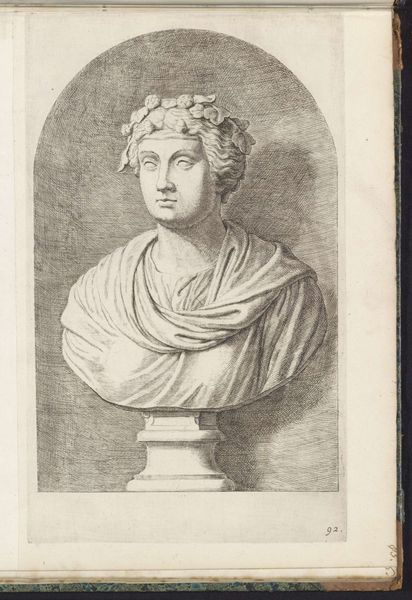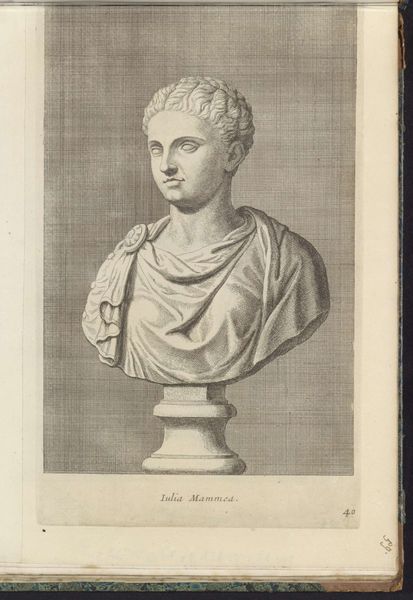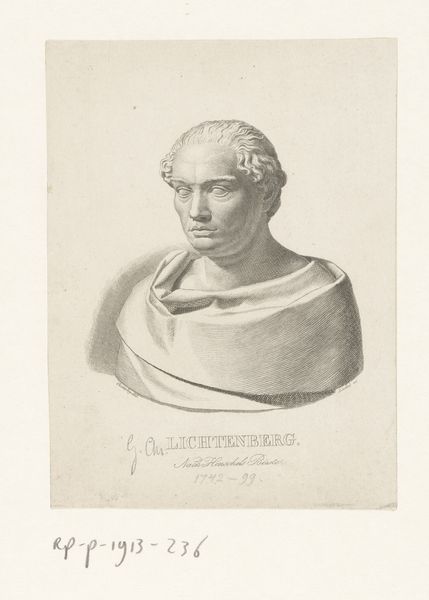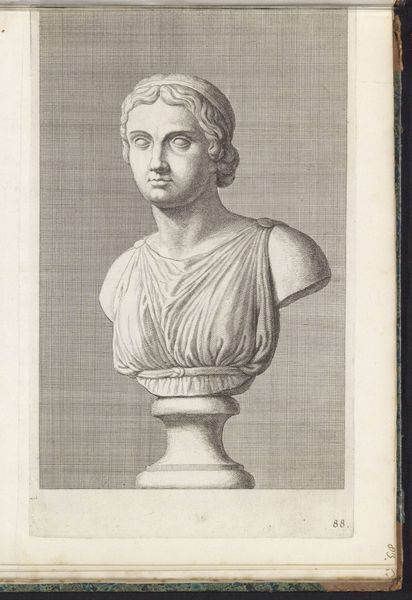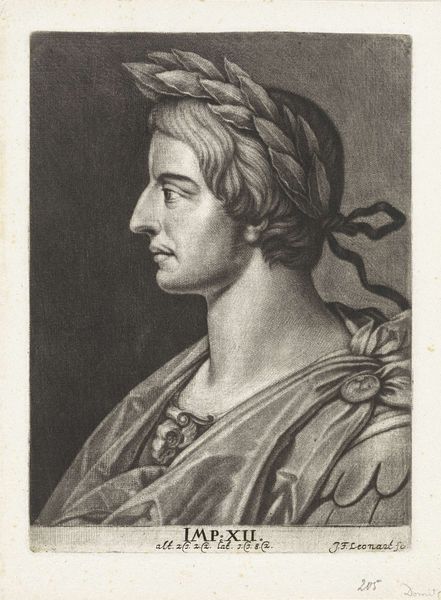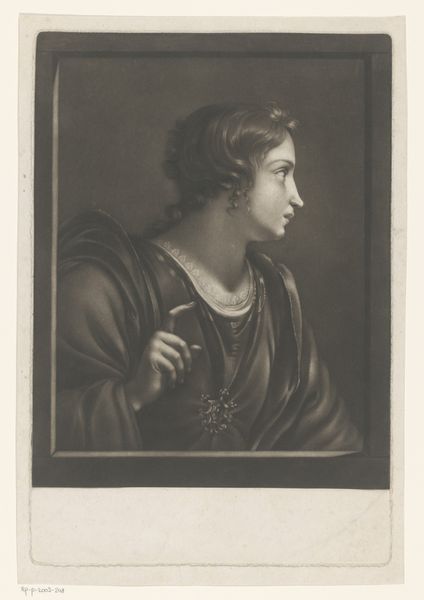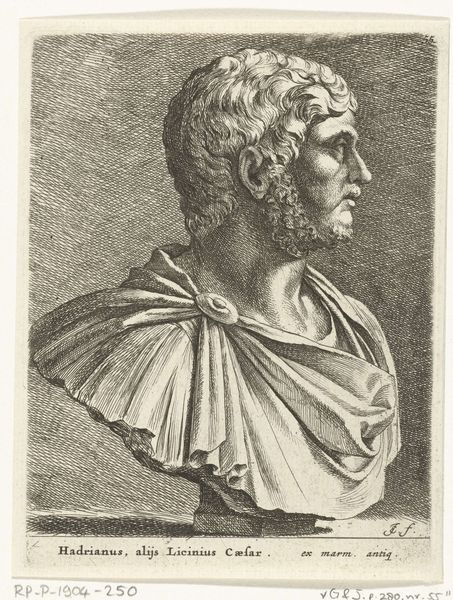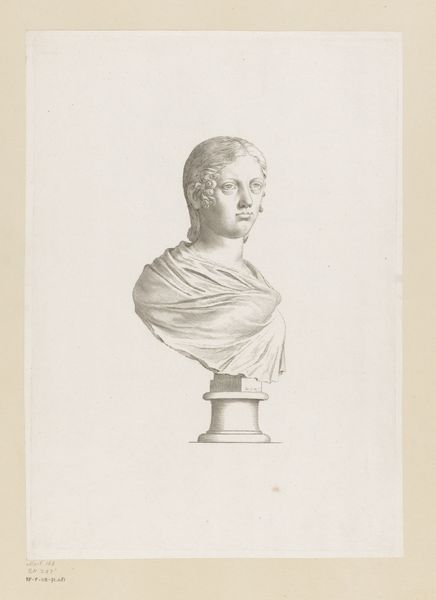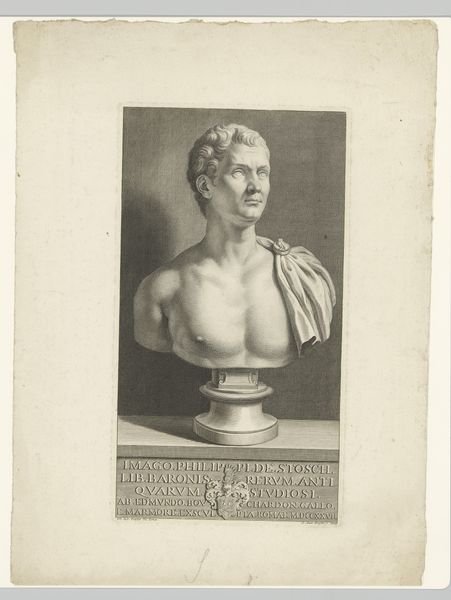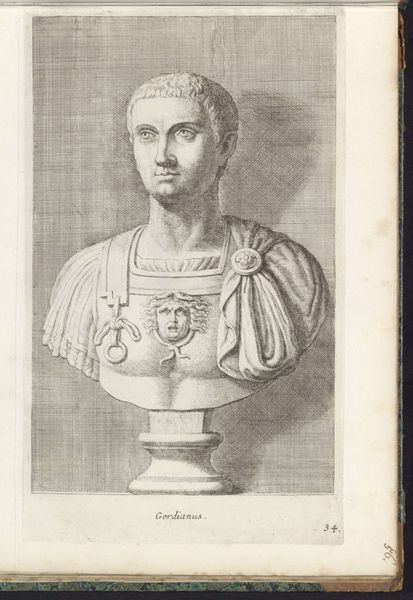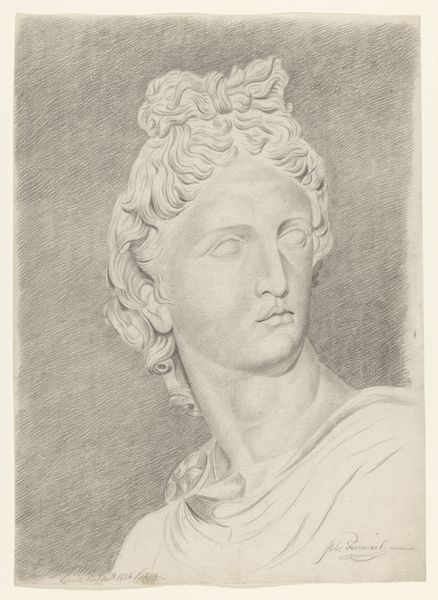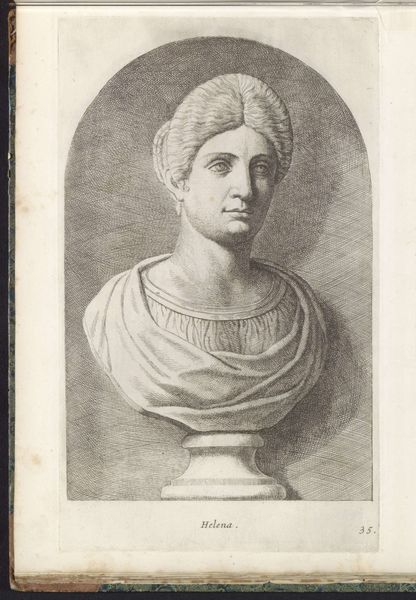
metal, engraving
#
portrait
#
baroque
#
metal
#
greek-and-roman-art
#
history-painting
#
engraving
Dimensions: height 353 mm, width 252 mm
Copyright: Rijks Museum: Open Domain
Editor: So this engraving is a portrait of Marcus Aurelius, dating from 1691-1721 by John (I) Faber. The whole composition feels very formal and somewhat distant to me. What symbolic significance do you see in this portrayal? Curator: Look at how the artist renders him. The deliberate chiseling gives a stony coldness to the bust, and this aesthetic choice impacts how we engage with Marcus. He appears stoic, almost detached from the human drama inherent to life and leadership. What emotional impact might that imagery convey, considering Marcus' philosophy of stoicism? Editor: I guess it highlights his commitment to reason and duty over emotional response. Curator: Precisely! And notice the laurel crown above, only hinted at. This symbol often speaks of victory, triumph, or immortal glory, doesn't it? Consider its muted presentation here, suggesting not boisterous conquest but something more understated, a legacy quietly enduring, and how the drape of fabric also echoes themes from antiquity. Does that nuance affect its impact? Editor: I think it makes it feel less about personal glory, and more about the weight of responsibility. Like he's bearing a burden rather than celebrating a win. Curator: Exactly! These symbols speak across time, embedding layers of meaning into a single image, connecting us not just to the Roman emperor but to the ideas he represents. A visual language constantly echoing. Editor: It's amazing how much symbolism can be packed into a single portrait. I hadn't thought about the implications of the laurel crown like that. Curator: Indeed! By understanding the symbolism of its age, a portrait becomes a richer encounter, revealing more about its subject than any historical account could alone.
Comments
No comments
Be the first to comment and join the conversation on the ultimate creative platform.
